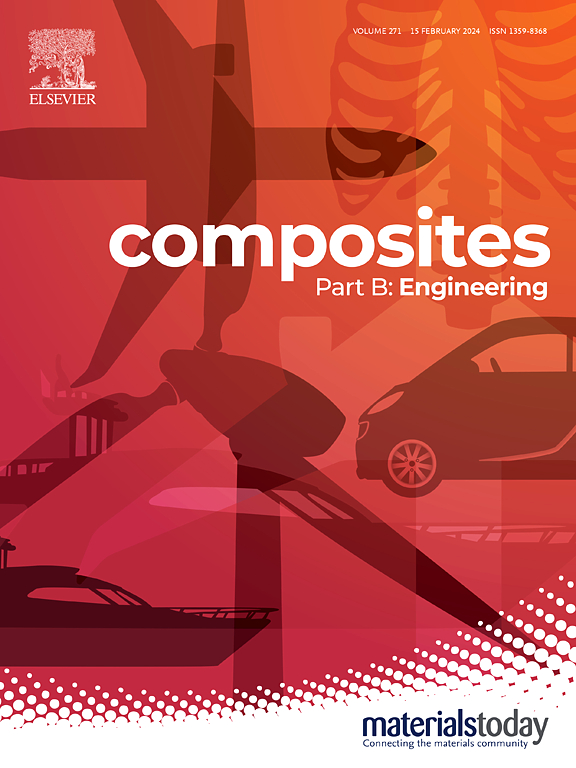A novel biomimetic strategy for improving lubrication performances of modified UHMWPE inspired by the slippery gel release behavior of chia seeds
IF 12.7
1区 材料科学
Q1 ENGINEERING, MULTIDISCIPLINARY
引用次数: 0
Abstract
Friction, wear, and their induced vibrations are the major problems observed in water-lubricating polymer components of mechanical equipment, as achieving effective lubricating films remains challenging due to the low viscosity and surface tension of water. Inspired by the self-protection mechanism of chia seeds, which release slippery mucilage under aqueous conditions, a novel biomimetic composite composed of natural chia seed polysaccharide (CSP) and ultrahigh molecular weight polyethylene (UHMWPE) is proposed. Because of its hydrophilicity, CSP within the composite can easily attract water molecules through non-covalent interactions in aqueous conditions, leading to its softening, swelling, and exudation to hydrate and form a gel layer with lubricating and protective effects at the friction interface, which is similar to the behavior of chia seeds in releasing gels. The resultant composite achieves a low coefficient of friction (COF) (below 0.031), which is attributable to the synergistic effect of fluid and hydration lubrication provided by the improvement in hydrophilicity, the increase in viscosity of the water-lubricating medium, and the formation of the hydration lubrication layer. This biomimetic strategy opens up a new avenue for treating the problems of insufficient lubrication, and the proposed composite shows potential for mitigating the friction-induced vibration and noise behaviors of underwater mechanical devices.
受奇亚籽滑凝胶释放特性启发的改进改性超高分子量聚乙烯润滑性能的仿生策略
摩擦、磨损及其引起的振动是机械设备中水润滑聚合物部件存在的主要问题,由于水的低粘度和表面张力,获得有效的润滑膜仍然具有挑战性。摘要根据奇亚籽在水环境下释放滑滑粘液的自我保护机制,提出了一种由天然奇亚籽多糖(CSP)和超高分子量聚乙烯(UHMWPE)组成的仿生复合材料。由于其亲水性,复合材料内部的CSP在水条件下容易通过非共价相互作用吸引水分子,导致其软化、膨胀、渗出水化,在摩擦界面处形成具有润滑和保护作用的凝胶层,类似于奇亚籽释放凝胶的行为。得到的复合材料具有较低的摩擦系数(COF)(小于0.031),这是由于亲水性的改善、水润滑介质粘度的增加以及水化润滑层的形成提供了流体和水化润滑的协同作用。这种仿生策略为解决润滑不足问题开辟了一条新的途径,并且所提出的复合材料显示出减轻水下机械设备摩擦引起的振动和噪声行为的潜力。
本文章由计算机程序翻译,如有差异,请以英文原文为准。
求助全文
约1分钟内获得全文
求助全文
来源期刊

Composites Part B: Engineering
工程技术-材料科学:复合
CiteScore
24.40
自引率
11.50%
发文量
784
审稿时长
21 days
期刊介绍:
Composites Part B: Engineering is a journal that publishes impactful research of high quality on composite materials. This research is supported by fundamental mechanics and materials science and engineering approaches. The targeted research can cover a wide range of length scales, ranging from nano to micro and meso, and even to the full product and structure level. The journal specifically focuses on engineering applications that involve high performance composites. These applications can range from low volume and high cost to high volume and low cost composite development.
The main goal of the journal is to provide a platform for the prompt publication of original and high quality research. The emphasis is on design, development, modeling, validation, and manufacturing of engineering details and concepts. The journal welcomes both basic research papers and proposals for review articles. Authors are encouraged to address challenges across various application areas. These areas include, but are not limited to, aerospace, automotive, and other surface transportation. The journal also covers energy-related applications, with a focus on renewable energy. Other application areas include infrastructure, off-shore and maritime projects, health care technology, and recreational products.
 求助内容:
求助内容: 应助结果提醒方式:
应助结果提醒方式:


